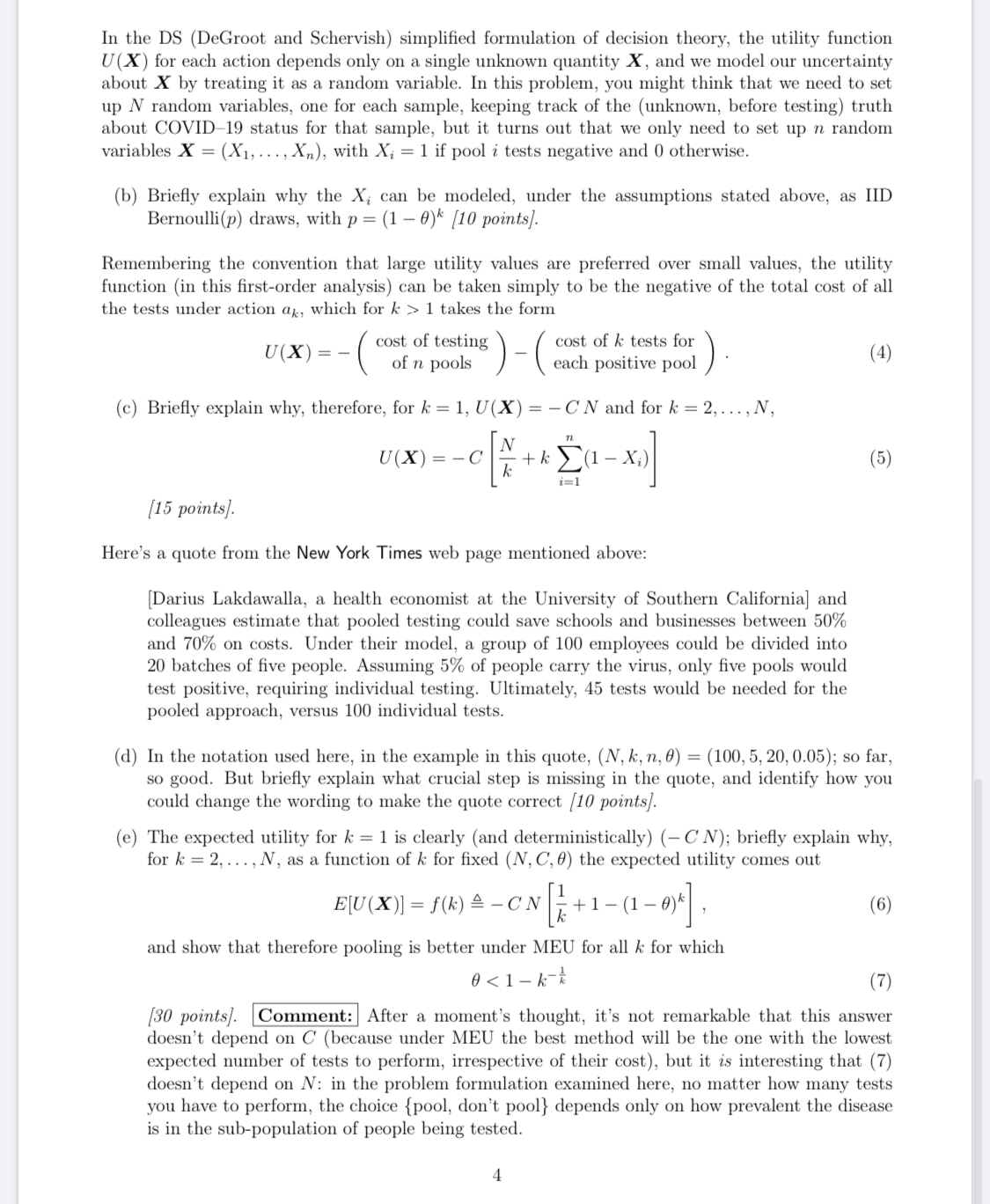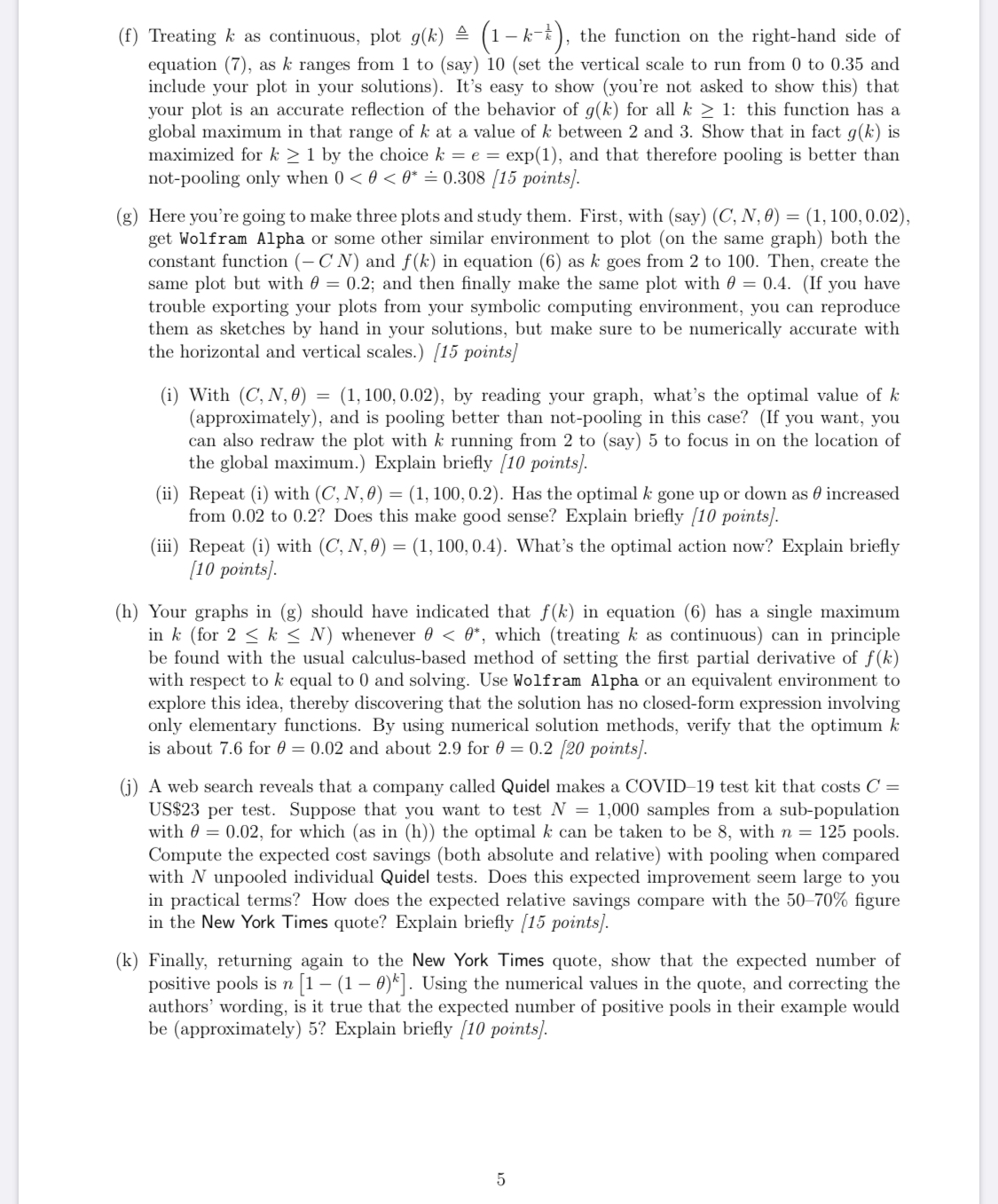Pages are numbered at the bottom of each page. I need help with all parts of #2! All information is provided with these pages. Page 1- half of page 2 was a separate problem
In the DS (DeGroot and Schervish) simplied formulation of decision theory, the utility function U (X ) for each action depends only on a single unknown quantity X, and we model our uncertainty about X by treating it as a random variable. In this problem, you might think that we need to set up N random variables, one for each sample, keeping track of the (unknown, before testing) truth about COVID19 status for that sample, but it turns out that we only need to set up 11 random variables X = (X1, . . . ,Xn), with X,- = 1 if pool 1' tests negative and 0 otherwise. (b) Briey explain why the X,- can be modeled, under the assumptions stated above, as IID Bernoulli(p) draws, with p = (1 Q" [10 points]. Remembering the convention that large utility values are preferred over small values, the utility function (in this rst-order analysis) can be taken simply to be the negative of the total cost of all the tests under action ak, which for k 2 1 takes the form _ cost of testing cost of 1: tests for U(X) _ _ ( ofn pools ) _ ( each positive pool ) ' {4) (c) Briey explain why, therefore, for k = 1, U(X) = CN and for k = 2,. . . ,N, N '1 U(X) = c [I +1: Egan-)1 {5) i=1 [15 points]. Here's a quote from the New York Times web page mentioned above: [Darius Lakdawalla, a health economist at the University of Southern California] and colleagues estimate that pooled testing could save schools and businesses between 50% and 70% on costs. Under their model, a group of 100 employees could be divided into 20 batches of ve people. Assuming 5% of people carry the virus, only ve pools would test positive, requiring individual testing. Ultimately, 45 tests would be needed for the pooled approach, versus 100 individual tests. (d) In the notation used here, in the example in this quote, (N, km, I9) = (100, 5, 20, 0.05); so far, so good. But briey explain what crucial step is missing in the quote, and identify how you could change the wording to make the quote correct [10 points]. (e) The expected utility for k = 1 is clearly (and deterministically) ( C N ); briey explain why, for k = 2,... , N, as a function of k for xed (N, C, 19) the expected utility comes out 1 E[U(X)1= me) 2 ON [3 + 1 (1 or] , (6) and show that therefore pooling is better under MEU for all k for which 6








